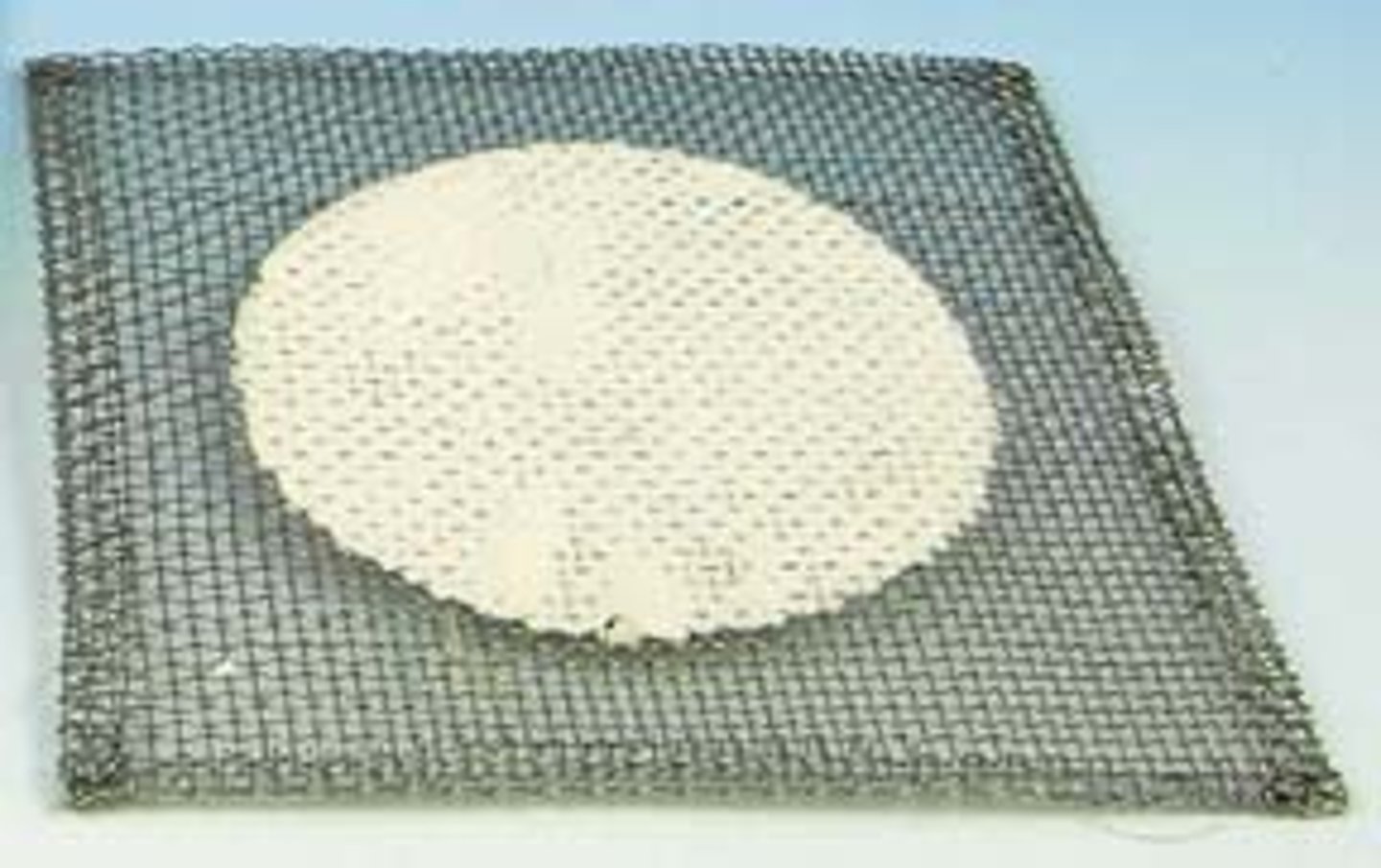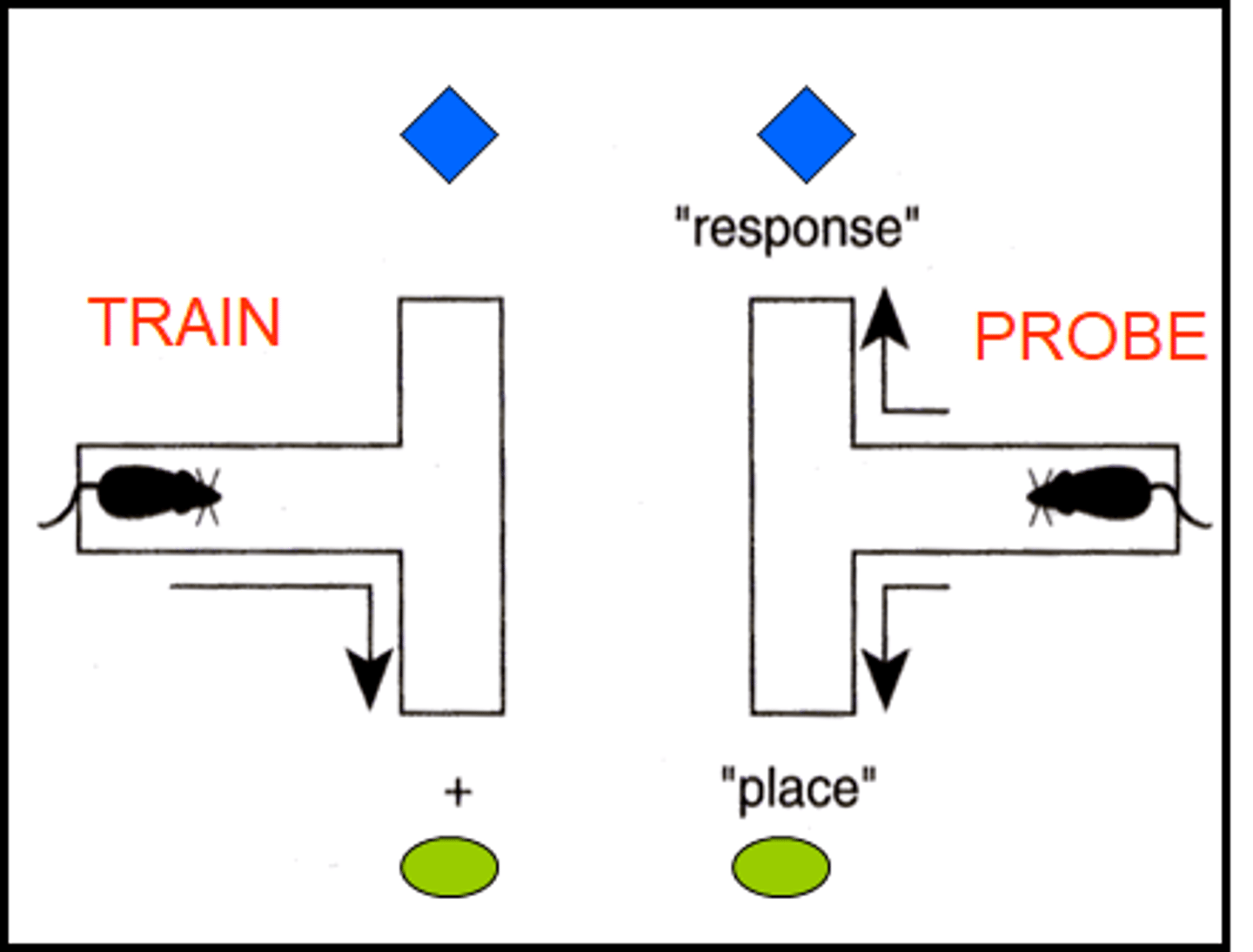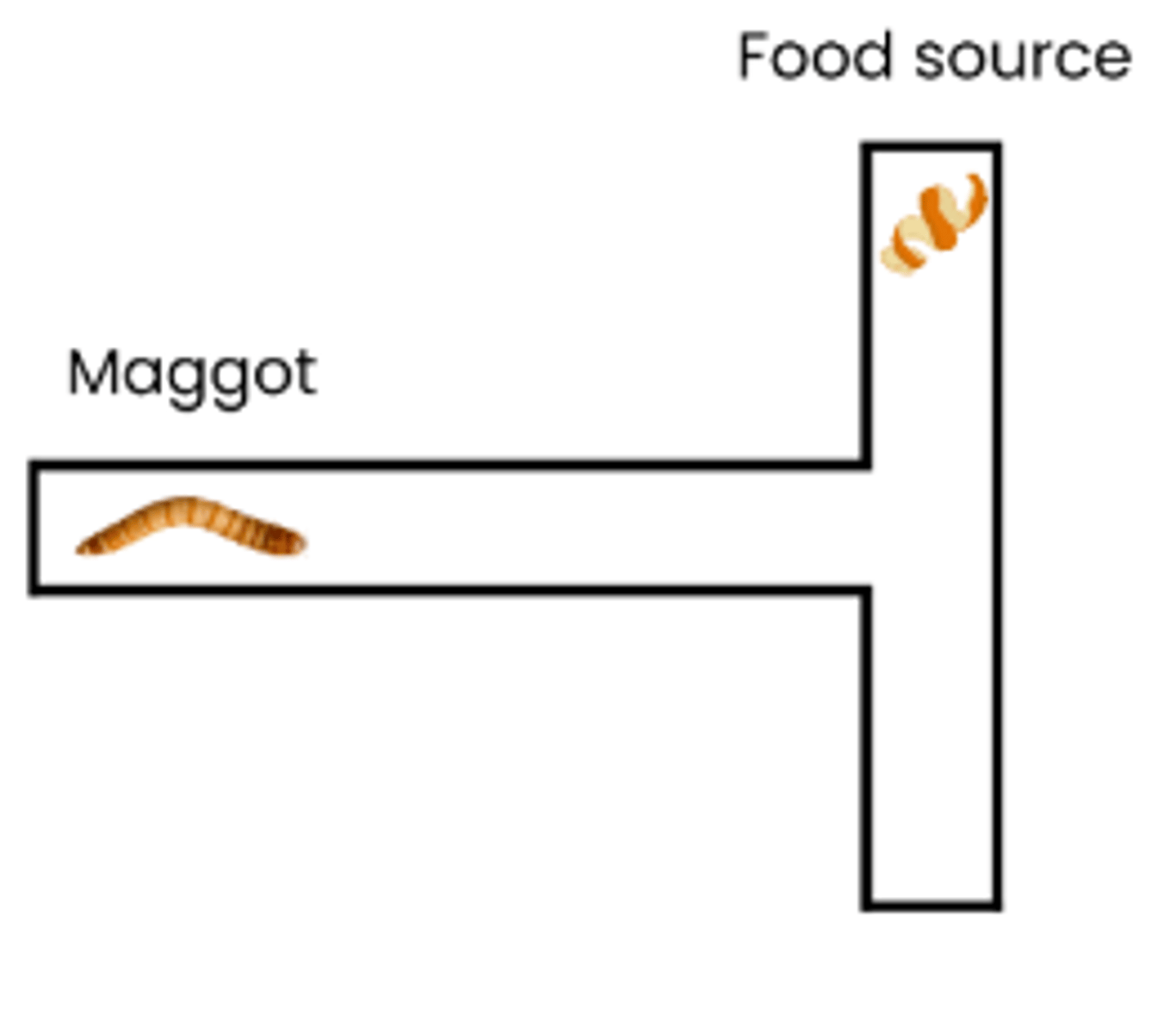RP10 - Investigation into the effect of an environmental variable on the movement of an animal using either a choice chamber or a maze
1/9
There's no tags or description
Looks like no tags are added yet.
Name | Mastery | Learn | Test | Matching | Spaced |
|---|
No study sessions yet.
10 Terms
Describe how the effect of an environmental variable on the movement of an animal (eg. woodlice) can be investigated using a choice chamber
1. Set up choice chamber (different compartments) to create different environmental conditions
○ Eg. humidity → add a drying agent to one side and damp filter paper to other
○ Eg. light → shine a light but cover one half with black card
2. Control other environmental conditions
○ Eg. if investigating humidity control light intensity with a dim even light above
3. Use a teaspoon to place 12 animals eg. woodlice on centre of mesh platform and cover with lid
4. After a set amount of time eg. 10 minutes record the number of animals in each section
5. Repeat after gently moving woodlice back to centre

The woodlice were left for 15 minutes before their movement was recorded when investigating the effect of humidity. Explain why.
● Time to establish humidity / for substance to absorb water / water from paper to evaporate
● Woodlice no longer affected by handling so that behaviour is typical of that humidity
Explain how you would ensure the safe and ethical handling of animals
● Safe: cover open wounds and wash hands with soap after to minimise risk of infection
● Ethical: handle carefully / return to habitat as soon as possible
Explain why a mesh platform is used when investigating the effect of humidity
● To keep woodlice a safe distance from drying agent

Why are mazes used?
to investigate turning behaviour in response to different environmental conditions

Describe how the effect of an environmental variable on the movement of an animal (eg. maggots) can be investigated using a maze
1. Change environment at one end of T shape eg. add food source
2. Place animal eg. maggot in stem of T
3. Record whether animal turns towards or away from food source
4. Repeat with a large number of maggots (remember to wipe / clean maze between trials)
5. Repeat with food on other side of T

Explain why the same organism is not used more than once.
● Reduces stress on maggots ● Prevents chance of learned behaviours
Explain why a clean petri dish / maze is used each time.
● Animals may leave chemicals / scents
● Which influence behaviour of other animals
Which statistical test should be used to analyse results and why?
- Chi-squared as data is categorical and we are comparing frequencies
- to see if there is a significant difference between observed and expected frequencies
what is the expected frequency?
equal numbers on each side